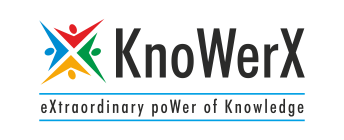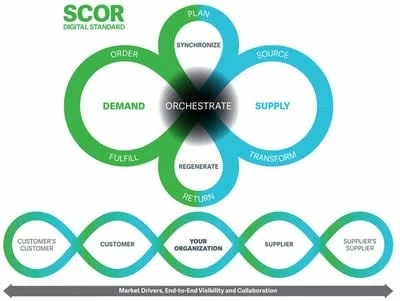Orchestrate
The Orchestrate stage describes the activities associated with the process integration and system enablement of the supply chain strategies. This comprises of business rules and enterprise activity and resource planning; human resources; elaborate network designs and technologies; data analytics; comprehensive contracts and agreements; timely regulations and compliance; pre-emptive risk mitigation; environment, social, and governance initiatives; circular supply chain management activities; balanced performance management; and much more.
Plan
The plan stage describes the activities associated with making roadmaps to operate the supply chain effectively. Planning is conducted for the subsequent prcesses – Order, Source, Transform, Fulfill and Return. This includes determining the input requirements; collecting information about the available resources; balancing and matching requirements with resources to determine planned operational capabilities and potential gaps in demand or resource utilization; and identifying the actions needed to correct these gaps.
Order
The Order stage describes the activities associated with the purchase of products and services by customers, including attributes like location, methods of payment, pricing of products and services, the status of fulfillment, and any other order data metrics that could provide valuable insight.
Source
The source stage describes the activities associated with material procuring, the ordering process, scheduling the order and its fulfillment process, the delivery process, payment collection, and invoicing, and the transfer of products and services.
Transform
The Transform stage describes the activities associated with the process scheduling and development of products, including production; assembling; disassembling; maintaining, repairing, overhaul functions, and more.
Fulfill
The Fulfill stage describes all the activities associated with executing customer orders or services, including scheduling delivery of the order, picking up the order package, packing of the order, shipping processes, installing, commissioning, and regulation complaint invoicing.
Return
The Return stage describes the activities associated with the reverse logistic and backward flow of goods and services from the customer to the manufacturer. This includes any service components from a customer through the supply chain network, in order to diagnose challenging conditions, evaluate entitlement, and the disposition back into Transform or other circular activities of the SCOR Model.
By using common definitions among all facets of the supply chain, SCOR creates a standard by which industry professionals can gauge the maturity and effectiveness of a network and understand how it supports business goals. Take a deeper dive into the model:
Results are consistent. Implementing SCOR maximizes process efficiency and overall supply chain performance. Typical results include:
• Improvement of the operating income.
• 2x to 6x return on investment in the first year of operation.
• Improvement in the return on assets for non-current assets, technology, or capex investments.
• 30% faster digital transformation in project implementation.
• Reduction in IT operating expenses through efficient use of standard system functions.
• Improving the ongoing profits by 0.5%-1% per year.
Learn how to apply SCOR to your supply chain operations.
At the pinnacle of the SCOR Processes hierarchy is Orchestrate level – the Level 0 process “Orchestrate” is at the Strategy level and it conveys and manipulates all of the levels below it.
After the Level-0 processes, SCOR Model recognizes six major Level-1 processes; i.e.: Plan, Order, Source, Transform, Fulfill, and Return.









